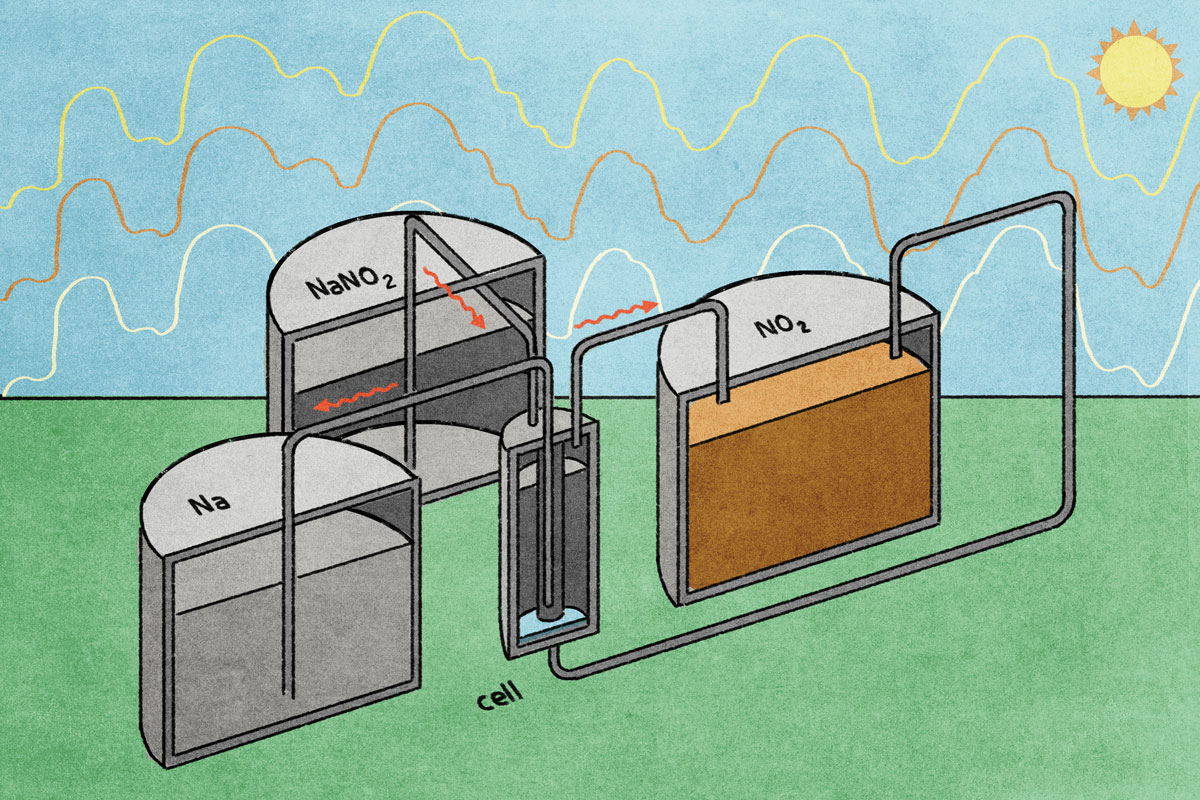Build a Radically Better Battery
To wean the grid from fossil fuels, we need a way to store vast quantities of energy.
Sunshine and wind both hold limitless potential as sources of energy, but there’s one glaring drawback—they blow hot and cold. This unpredictability is a major problem for the power grid, because despite decades of effort there’s no good way of storing energy on such a colossal scale. Many cockamamie schemes have been proposed—everything from giant flywheels to compressing air into underground caverns—but what’s needed is a battery that can be built to scales never seen before.
Enter Jeff Koplow ’90, a scientist at the U.S. Department of Energy’s Sandia National Lab in Livermore, California. As part of the SunShot Initiative, an interagency project to accelerate the use of solar power, he’s been rethinking batteries. Rather than fine-tune existing technologies, Jeff stepped back and asked what a successful power grid battery would look like.
It would need to be massively scalable, built from cheap materials, and employ energy-dense liquid chemical reagents to store energy. It would need to be safe, relatively nontoxic, last for thirty years without maintenance, and decommission easily. With these constraints in mind, he reviewed earlier attempts at batteries, considering everything from their chemistry to the market forces that led to their invention and failure. After years of research, he focused on an obscure chemical reaction involving sodium nitrite, nitrogen dioxide, and a molten sodium electrode. Put it all together and you get what he calls the “Radical Ion-Flow Battery.”
Jeff published a comprehensive report on the idea in 2018, showing how the invention works, identifying economic, manufacturing, and maintenance issues. He also guides the reader through his thought process, an approach that’s surprisingly rare in scientific publications.
“The multidisciplinary perspective,” he says, “enables you to cover a lot of ground very quickly.”
He can cover that ground thanks to an omnivorous approach to the physical sciences, backed up by an intellectual humility honed at Reed. “I accept the fact that taking on such a difficult problem means failure may be unavoidable,” he says. “That’s okay, because it’s not about me. The bottom line is that we need to figure out grid storage technology.”
Since Reed, he’s used his peculiar combination of humility and ambition to reinvent fiber lasers, develop a new way to shed heat, and create a new generator that eliminates strategically vulnerable rare-earth magnets from wind turbines. His latest invention is a new transformer that can protect America’s vulnerable power grid from electromagnetic pulse attacks and coronal mass ejections.
His work on the Radical Ion-Flow Battery has already been cited by engineers at IBM who are developing next-generation batteries for electric vehicles and electric aircraft.
Tags: Alumni, Business, Entrepreneurship, Innovation, Climate, Sustainability, Environmental
